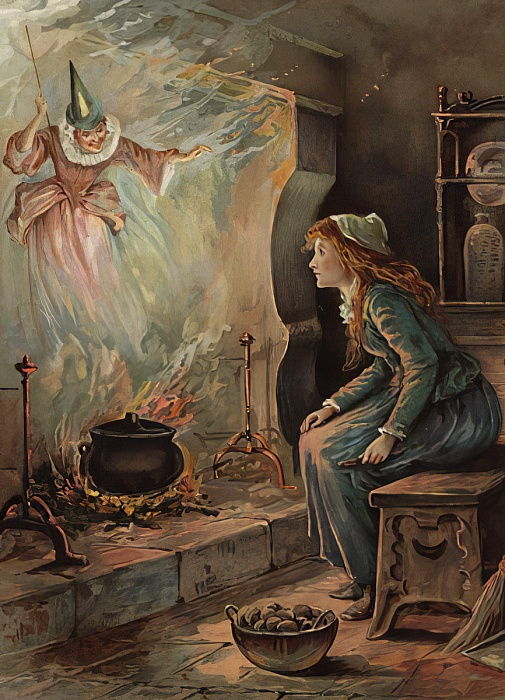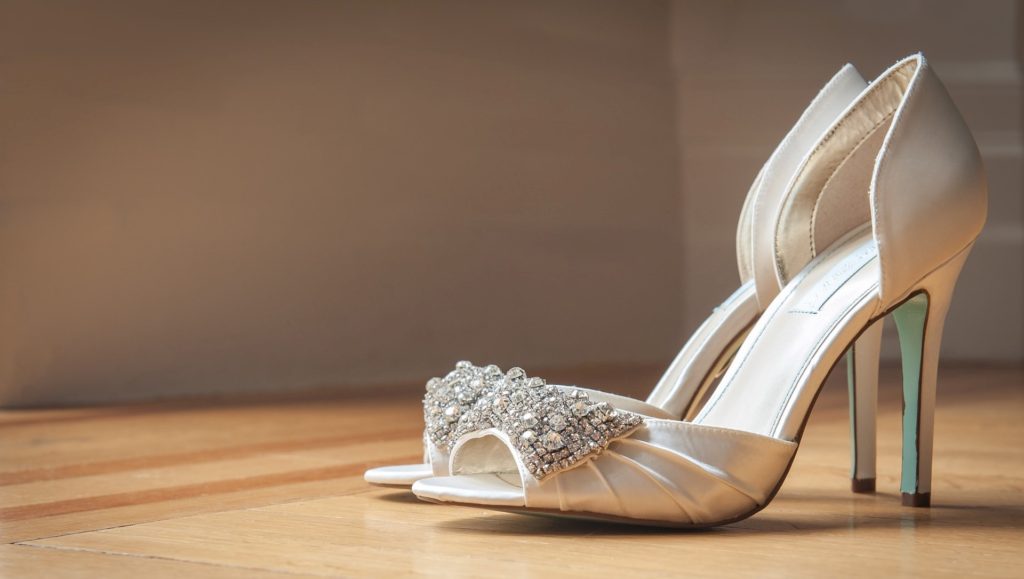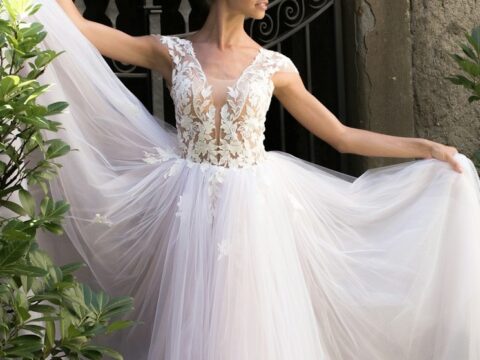“All right, what’s your heart’s desire?”
I sat down on my bed, suddenly miserable. I wasn’t happy and couldn’t even think of a way to change my life so I would be. Chrissy looked at me, her wings fluttering and the wand grasped in one hand. She checked her watch. “Is this going to take a long time? I hate to rush you, but I have a shopping trip planned with some mall pixies.”
“I just wish that somehow my life could be like a fairy tale. You know, with a handsome prince waiting for me at the ball, and that somehow when I meet him, everything will work out happily ever after.”
“Okay, great. One Cinderella coming up.”
Before I could say another word—and I planned to say, “Wait, that wasn’t my wish!”—white sparks surrounded me.
My Fair Godmother, Janette Rallison
Despite their enduring popularity, fairy godmothers are actually quite rare in the original fairy tales. In most versions of Cinderella, she gets her beautiful ball gown from magical birds or the spirit of her deceased mother. It’s only in the Charles Perrault version that Cinderella’s fairy godmother poofs onto the scene, turning her pumpkin into a carriage.
But despite how infrequently fairy godmothers show up, they’ve made their mark on pop culture. So much so that modern writers have taken the fairy godmother trope and run with it.
One fairy godmother story I read recently and LOVED was Janette Rallison’s My Fair Godmother. And for the record, Rallison’s fairy godmother is a pretty radical departure from the original fairy godmothers of old.

Where Did Fairy Godmothers Come From?
There’s really only two mainstream fairy tales with fairy godmothers: Cinderella (naturally) and the gift-bestowing fairies in Sleeping Beauty.
Charles Perrault and Madame D’Aulnoy popularized fairy godmothers in the French tales they wrote during the late 1600s. These storytellers both drew from old tales of fairies attending the birth of babies to bestow magical gifts or grand prophecies.
Perrault and D’Aulnoy combined this concept of fairy gift-givers with the Catholic traditions of medieval Europe. Most babies had godparents who would preside over the child’s christening and take the responsibility of guiding and caring for the child’s spiritual needs. In the French fairy tales, fairy godmothers are the ones who protect a child from dangerous magic—in the case of Sleeping Beauty—and otherwise guide the protagonist to their happily ever after.
This role of benevolent godparent is actually quite a fascinating take on fairies.
Because Fairies Aren’t Usually That Helpful
In fact, the fairies of ancient lore can be downright nasty. Irish fairy tales especially feature fae entities that mostly keep their magic to themselves. If they do come across humans, they’re often found kidnapping babies, bestowing curses for their own amusement, or otherwise keeping humanity on their toes.
From that perspective, Perrault’s kind fairies who watch over a child’s baptism and return during that child’s moment of greatest need was a fresh, reassuring twist on an old concept. His idea that good forces of magic are actively balancing out the curses of evil fairies and wicked stepfamilies is a surprisingly optimistic message for fairy tales.

This concept of benevolent fairy godmothers was further popularized by the great Walt Disney. The Disney version of Cinderella draws heavily from Perrault’s story and therefore includes the glass slippers and fairy godmother. Disney’s Sleeping Beauty features fairy godmothers even more prominently by having Flora, Fauna, and Merriweather raise Briar Rose themselves to protect her.
But These Days? Fairy Godmothers Are Going Evil
The modern fad of benevolent fairy godmothers is starting to fall by the wayside. Instead fairy godmothers have reverted back into tricky, underhanded fae in two main ways.
First, we have fairy godmothers who are just downright sketchy, using their magic to blackmail and connive. The fairy godmother from Shrek 2 comes to mind . . . I also love the way Disney’s Maleficent subverted this trope twice with the evil fairy godmother bestowing a curse and then having a change of heart later in the story.
In another vein, lots of fairy godmothers lately are straight up incompetent. Often this is played for laughs as these subpar fairies try to prove their worth. But mostly they just inflict themselves on protagonists who would be way better off without magic. Disney’s 2020 film Godmothered was a particularly delightful take on this.
But if you’re looking for a fairy godmother who’s both incompetent and the antagonist of her story, the book My Fair Godmother is a super juicy retelling.
Janette Rallison Creates the Worst of Both Worlds
My favorite thing about this book was how it kept surprising me.
First, the fairy godmother was nothing like I expected. Instead of a kind, benevolent old lady, this fairy is a teenager with pink hair, sunglasses, and an awesome nail job. She’s also a lazy spoiled brat. We learn very quickly that she was a C student in fairy school—a “fair” godmother rather than a good or great one.

On top of her questionable magic skills, this fair godmother has no qualms giving out wishes that make people miserable. She’s not here to be nice. She’s here on assignment to get the job done by bestowing very literal wishes that nobody would want. All in a day’s work.
Unsurprisingly, the fair godmother’s bad gifts are the driving force of this book. Soon Rallison’s characters are trapped in magical contracts and sticky situations that they have to use all their wits and willpower to escape.
The Main Character Surprised Me Too
At the beginning, I thought the protagonist of My Fair Godmother was Jane, a bookish, plain girl whose world gets flipped upside-down when her high school crush starts dating Jane’s younger sister, Savannah.
Overcome with jealousy, Jane immediately goes through a makeover montage to capture the boy’s attention and win him for herself. Soon Jane gets her wish, and Savannah is devastated when her boyfriend dumps her right before prom. For her older sister. Ouch.
But Jane actually isn’t the main character. Our heroine is Savannah, her younger, peppy sister with perfect highlights in her hair and very little interest in her schoolwork. But despite my first impression, I quickly found that Savannah is miles more likeable than her sister.
Savannah may be a slack-off at school and overly interested in fashion. But she’s also funny, generous, kind, and determined. Instead of bitterly seeking revenge on her selfish sister, Savannah decides to move forward and find a new prom date who likes her for who she is.

The very next day, Savannah comes home to find Chrysanthemum Everstar, her fair godmother, waiting to grant her three wishes. But this magical opportunity turns into a nightmare faster than you can say “be careful what you wish for.”
Surprise #3: This Book Has a Great Message
My Fair Godmother is a hilarious, easy read filled with teen angst and bubble gum rom-com fun. But this book also presented some really important themes that I think every teenage girl needs to hear.
I won’t spoil the plot, but I will say that aside from gaining confidence in herself, Savannah also learns some hard-won lessons about not letting anyone’s labels of you hold you back. All teenagers struggle with what other people think of them, and I found Savannah’s coming-of-age journey and her choice to seize her own inner strength quite refreshing.
This story is a romantic comedy, but it’s also a really positive forgiveness story. One that we all need. If you want to read a new take on fairy godmothers and an uplifting, charming teen adventure, My Fair Godmother is a great choice. ❧





